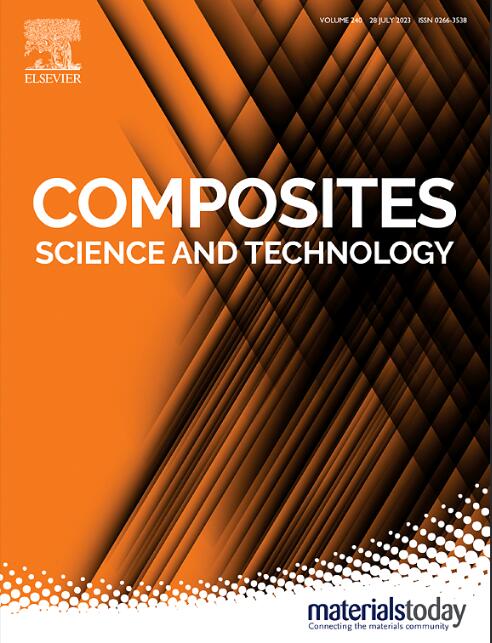Multi-fidelity data fusion for inelastic woven composites: Combining recurrent neural networks with transfer learning
IF 8.3
1区 材料科学
Q1 MATERIALS SCIENCE, COMPOSITES
引用次数: 0
Abstract
Surrogate deep learning models provide an efficient solution for reducing the computational demands of homogenizing complex meso-scale woven composites to study their elasto-plastic mechanical behaviors. This research introduces a comprehensive framework using transfer learning that combines data from a mean-field homogenization approach with high-fidelity full-field simulations. In a design space characterized by diverse loading conditions and micro-scale constitutive material properties, the goal is to address the challenges of generating sufficient datasets for training a data-hungry gated recurrent neural network (GRU). Multiple datasets of varying precision are generated and used, containing multi-axial stress–strain responses under two load types: random walking and proportional cyclic loading. Moreover, this study emphasizes the importance of temporal correlations in the dataset, which align with the physically path-dependent behavior of most non-linear materials, and demonstrates that temporal correlations are crucial for training time-series models. These correlations also provide the foundation for data augmentation using a linear interpolation technique within time-series stress analyses, enabling accurate predictions of homogenized meso-scale stresses based on strain trajectories and microstructural properties. Results demonstrate that integrating transfer learning with neural networks successfully incorporates a limited number of high-fidelity data with more accessible but low-fidelity data. With this framework, surrogate models for predicting the complex behavior of woven composites will be accurate and efficient, marking an important advancement in material modeling.

非弹性编织复合材料的多保真度数据融合:递归神经网络与迁移学习的结合
代理深度学习模型为研究复杂细观尺度编织复合材料的弹塑性力学行为提供了一种有效的解决方案。本研究介绍了一个使用迁移学习的综合框架,该框架将来自平均场均匀化方法的数据与高保真全场模拟相结合。在以不同加载条件和微尺度本构材料特性为特征的设计空间中,目标是解决生成足够的数据集以训练数据饥渴的门控递归神经网络(GRU)的挑战。生成并使用了多个不同精度的数据集,包含随机行走和比例循环加载两种载荷类型下的多轴应力-应变响应。此外,本研究强调了数据集中时间相关性的重要性,这与大多数非线性材料的物理路径依赖行为相一致,并证明了时间相关性对于训练时间序列模型至关重要。这些相关性也为在时间序列应力分析中使用线性插值技术增加数据提供了基础,从而能够根据应变轨迹和微观结构特性准确预测均匀的中尺度应力。结果表明,将迁移学习与神经网络相结合,成功地将有限数量的高保真数据与更容易访问的低保真数据结合起来。有了这个框架,用于预测编织复合材料复杂行为的替代模型将是准确和有效的,这标志着材料建模的重要进步。
本文章由计算机程序翻译,如有差异,请以英文原文为准。
求助全文
约1分钟内获得全文
求助全文
来源期刊

Composites Science and Technology
工程技术-材料科学:复合
CiteScore
16.20
自引率
9.90%
发文量
611
审稿时长
33 days
期刊介绍:
Composites Science and Technology publishes refereed original articles on the fundamental and applied science of engineering composites. The focus of this journal is on polymeric matrix composites with reinforcements/fillers ranging from nano- to macro-scale. CSTE encourages manuscripts reporting unique, innovative contributions to the physics, chemistry, materials science and applied mechanics aspects of advanced composites.
Besides traditional fiber reinforced composites, novel composites with significant potential for engineering applications are encouraged.
 求助内容:
求助内容: 应助结果提醒方式:
应助结果提醒方式:


